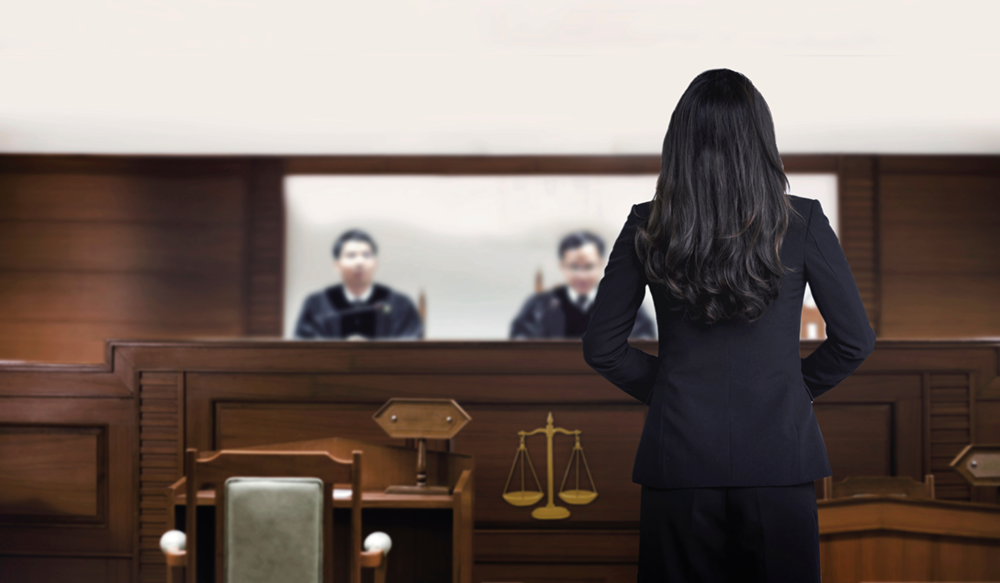Understanding the Art of Trial Presentations: Secret Methods for Reliable Lawful Arguments
Understanding the Art of Trial Presentations: Secret Methods for Reliable Lawful Arguments
Blog Article
Navigating the Intricacies of Trial Presentations: Tips for Seamless Distribution and Compelling Debates
In the world of lawful proceedings, the art of trial presentation stands as a crucial factor of success. The intricacies integral in test discussions require a delicate balance of skill, ability, and method.

Comprehending Test Purposes
To efficiently navigate a trial, it is critical to have a clear understanding of the objectives that need to be achieved. Before tipping right into the court room, legal groups need to specify their objectives and wanted outcomes. These objectives serve as directing principles throughout the trial, shaping approaches and affecting decision-making procedures.
Recognizing test purposes involves a comprehensive analysis of the case, legal precedents, and the customer's ideal passions. Trial Presentations. It calls for a thorough exam of the realities, recognizing vital concerns, and preparing for possible obstacles. By establishing quantifiable and details goals, attorneys can customize their disagreements and presentations to straighten with the wanted results
Furthermore, a clear grasp of test goals allows legal groups to focus on evidence, witnesses, and legal debates properly. It permits the advancement of a coherent story that reverberates with the court and jury, strengthening the total situation presentation.

Organizing Proof Successfully
Having a clear understanding of test objectives lays the structure for organizing evidence effectively in lawful procedures - Trial Presentations. By lining up the presentation of proof with the preferred results of the trial, lawful teams can strengthen their disagreements and improve their persuasiveness. One essential aspect of arranging evidence is categorization. Organizing evidence based upon styles or relevance to specific lawful elements can aid streamline the discussion and make complicated information a lot more digestible for the court or jury.
Another trick element in arranging proof effectively is developing a logical flow. Offering evidence in a systematic and sequential way can aid build an engaging story that supports the lawful disagreements being made. In addition, utilizing aesthetic help such as timelines, charts, or charts can better enhance the company of proof and assist in clearing up intricate relationships or sequences of occasions.
In addition, guaranteeing that all evidence offered is admissible and pertinent to the instance is important. Unnecessary or inadmissible evidence can detract from the stamina of the debate and possibly damage the reliability of the presenting event. A precise evaluation and choice process ought to be embarked on to include only the most legally sound and impactful evidence in the trial presentation.
Crafting Persuasive Narratives
Crafting compelling narratives plays an essential role in offering convincing arguments throughout legal proceedings. When creating a story for a trial discussion, it is crucial to develop a clear story that highlights crucial points and links them in a coherent way. By weaving together proof, testament, and legal debates into a natural and persuasive narrative, lawful professionals can successfully advocate for their clients and raise the possibility of a desirable outcome in the court room.
Grasping Visual Help
Efficient use visual aids is crucial to boosting the impact and clearness of test presentations. Visual aids, when made use of strategically, have the power to simplify complicated details, enhance essential points, and leave a long-term impression on the judge and jury. To grasp aesthetic help in test presentations, it is important to make certain that they are clear, succinct, and relevant to the disagreements being made.
When including aesthetic help, such as graphes, photos, charts, or timelines, right into a test discussion, it is important to keep them visually appealing yet professional. The visuals should complement the verbal arguments, offering a visual representation of the information being talked about without overwhelming the audience with unnecessary details.
Moreover, practicing with the visual help ahead of time is essential to guarantee a seamless delivery throughout the test. Acquainting oneself with the material, transitions, and timings of each visual help can aid maintain the circulation of the discussion and stop technical glitches that might emerge.
Supplying Impactful Closing Disagreements
A compelling closing disagreement serves as the conclusion of a test presentation, enveloping the core narrative and encouraging the judge and court in the direction of a positive choice. Begin by describing the major disagreements that sustain your client's setting, stressing why the evidence provided throughout the test supports informative post your narrative.
Furthermore, integrating psychological allure can better reinforce your closing argument. Ultimately, a well-crafted closing argument ought to leave an enduring perception, engaging the court and jury to rule in your client's favor.
Verdict
In conclusion, mastering trial click for more discussions includes recognizing goals, arranging evidence, crafting narratives, using visual aids, and delivering impactful closing arguments. By implementing these strategies properly, legal representatives can offer their case seamlessly and make engaging debates in the court. It is vital to browse the complexities of trial discussions with accuracy and skill to achieve success in legal process.
By straightening the discussion of proof with the preferred results of the trial, lawful groups can enhance their arguments and enhance their persuasiveness (Trial Presentations). To understand aesthetic aids in test discussions, it is important to guarantee that they are clear, concise, and pertinent to the debates being made
An like it engaging closing disagreement serves as the end result of a trial discussion, enveloping the core narrative and encouraging the judge and court in the direction of a beneficial choice. Begin by detailing the main debates that support your customer's setting, emphasizing why the proof provided throughout the test supports your story.In final thought, mastering test presentations includes understanding goals, organizing proof, crafting narratives, using aesthetic aids, and supplying impactful closing debates.
Report this page